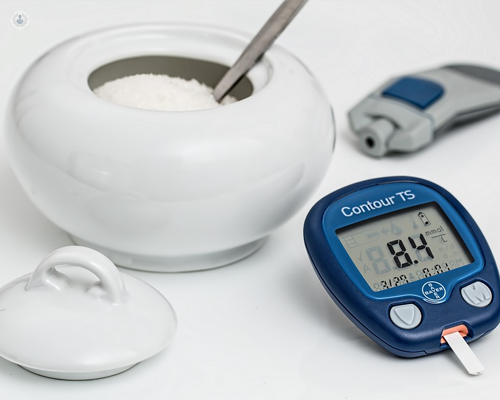The insulin pump, the artificial pancreas and the future in the treatment of diabetes
Written by:People with diabetes are always aware of advances in treatment, to live with diabetes as easily as possible. The insulin pump and the artificial pancreas are currently the best known.
The insulin pump
It is demonstrated that insulin pumps improve glycemic control because glycosylated hemoglobin, glycemic oscillations, insulin doses used and important hypoglycaemia are significantly reduced.. All in all, they improve the quality of life of patients. These advantages are proven for all ages, in children and infants as well. That said, it would seem that all type 1 diabetics should have an infusion pump as their treatment, but it is not as simple as it seems.

It must be borne in mind that infusion pumps are injected only with rapid-acting insulin (duration of 4 hours) and are connected to the body by a very thin catheter.. Well, if the catheter is layered, has a bubble, falls off, etc., the insulin stops passing and ketoacidosis occurs in 5 hours, therefore, so that the person can carry a pump has to be done at least 6 to 7 daily glycemic controls and learn to handle situations of all kinds, know how to count rations and have extensive knowledge of how to act in the varied circumstances that the day to day presents (exercise, fever, alcohol, etc.). That is, they require a very broad learning process and a very high dose of personal responsibility. And not always the professional has the time or the means to carry out this type of treatment. Another aspect to take into account is the short-term cost involved.
The artificial pancreas
There are people who think that the current pumps inject you insulin alone without the intervention of the individual. And I always tell my patients: No! the pumps that we use are "silly", we have to program the insulin that they must infuse. Well, the artificial pancreas is a pump that goes beyond, are already "smart" devices that calculate the doses of insulin (and glucagon) that must be injected depending on the blood glucose at all times and, for this, need the patient also has a continuous blood glucose sensor. They are already a reality and will be commercialized in a short time.
The problems come in those millimeter calculations that must be made while the sensor and pump catheter are inserted in the subcutaneous cellular tissue, and it is known that with glycemic oscillations the blood glucose takes a variable time to reflect in the subcutaneous cellular tissue. This is important in hypoglycaemia , because you can have one that has occurred quickly and that is not reflected in the subcutaneous cell tissue with the rapidity required by the urgency of the case and, therefore, the pump will continue to release insulin.. This type of security problems are those that are complicating its implementation.
The future
If we look to the future there is something clear: people with diabetes are waiting for a glucometer that does not pierce your finger ... and however much publicity there is in this regard, a reliable meter has not yet been achieved. That will be a very important step and, I have no doubt, it will be achieved. But at the moment patients have to keep doing blood glucose and learn to count hydrates and fats to adjust well the boluses. Education is the basis of good control, no doubt, and in the near future will remain the key.
The artificial pancreas is, in my opinion, an infinite step in the path of diabetes treatment. If it is marketed this year or next year ... it will be awesome! The rest, will be completely obscured. What do glucose meters coupled to mobiles arrive in a general way? What all the glucometers have bowling calculators ? What are sensors that last longer without having to be changed? Improve the accuracy of the devices? These are also very important steps that will undoubtedly emerge little by little.


